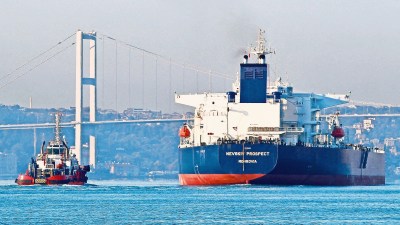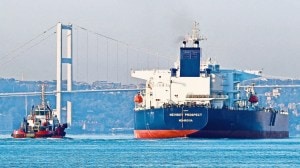India’s plan to tighten fuel-efficiency rules under the proposed third phase of the Corporate Average Fuel Efficiency (CAFE) rules from FY28 has opened a sharp divide within the auto industry, with carmakers split over how the next phase of norms should treat small and large vehicles. The framework sticks to a weight-based formula that steadily tightens through FY32, but its structure means lighter cars face far steeper improvements than heavier SUVs.
Companies with a predominantly small-car portfolio have argued that this puts an unequal burden on budget models, which already operate on wafer-thin margins and have limited room for costly technologies like hybrids. They warn that pushing stringent targets onto entry-level cars risks making them unaffordable for first-time buyers and could accelerate the market’s existing shift toward larger, pricier vehicles.

Market leader Maruti Suzuki, which has a large portion of small cars in its portfolio with models such as the Alto, Wagon R and Celerio, has said that the proposed CAFE 3 norms may disadvantage such cars. Its chairman RC Bhargava had argued that the idea behind CAFE norms was to make big cars improve fuel efficiency and reduce emissions.
But Tata Motors, which also sells some small cars such as Tiago and Altroz, said the company has “absolutely no concerns in meeting CAFE norms”. Tata Motors Passenger Vehicles MD and CEO Shailesh Chandra recently said, “There has been an effort to define an arbitrary category of small car, basis weight. We do not support any move to include weight in the definition of small cars. Such an arbitrary criteria would conflict with one of the country’s most critical imperative that is safety”.
In several foreign jurisdictions such as the US, China, South Korea and Japan, smaller, lightweight cars have relaxed emissions norms. In Europe, for instance, which has some of the most stringent emissions norms, and from where India draws a lot of inspiration for its Bharat Stage (BS) regulations, bigger cars have a lower absolute CO₂ target and smaller cars have relaxed targets.
Why the industry is divided
Under India’s proposed CAFE 3 norms, which are expected to kick in from FY28, the efficiency formula is [0.002 x (W – 1170) + c]. It is measured in petrol-equivalent litres per 100 km. Here W is the average fleet weight, 1,170kg is the fixed constant for weight, 0.002 is a fixed constant multiplier, and ‘c’ is a constant that changes every year. Since ‘c’ continues to decrease from FY28 to FY32, the rules will become stricter over time. This constant starts at 3.7264 in FY28, then drops to 3.0139 in FY32. To calculate the CO2 emissions, this has to be further multiplied with 23.7135, which is the petrol equivalent fuel consumption number.
Let’s take a light car, which weighs 740 kilograms. For it, the target in FY28 as per the formula will be: 0.002 x (740 – 1170) + 3.7264, that is 2.87 litres/100km. The final CO2 emissions value then will be 68 CO2 g/km. In FY32, that target will become about 51 CO2 g/km, an increase of 25 per cent. Here, a decline in CO2 g/km denotes a rise in fuel efficiency.
Story continues below this ad
Under India’s CAFE’s 2 targets for 2022-23, the efficiency formula was 0.002 x (W-1082) + 4.7694. Upon inputting the same values, the target for this car would be 97 CO2 g/km. This effectively means that from CAFE 2 to the end of CAFE 3 in FY32, this small car would have to be made 48 per cent more efficient.
Now, let’s take a heavier car, which weighs 2,500 kg. As per the above formula, its FY32 CAFE 3 target would be 134.5 CO2 g/km and its CAFE 2 target was 180.4 CO2 g/km, which means that car would have to become only 25 per cent more efficient, even though on an absolute scale, it will be a bigger pollutant than smaller cars.
This is the crux of the tussle.
Some carmakers, which have a significant portfolio consisting of lighter cars, believe that the onus of reducing emissions is much higher on smaller cars than it is for bigger, heavier SUVs. They feel that in bigger cars, there is a greater scope of implementing emissions-reducing technologies, such as hybrid or full electric powertrains. But, in smaller cars, the scope is far less as these are built to a budget. If they were to implement, for instance, a hybrid powertrain in a smaller car, that would increase its cost and make it unaffordable for much of its target audience.
“What the proposed changes to CAFE will do is encourage manufacturers to implement ‘brick in the boot’ strategies. That is, they will just make bigger cars since the target for heavy cars is comparatively relaxed. But those are generally more expensive, so the budget end of the market, which includes primarily first-time buyers, will be priced out,” a senior industry executive said.
Story continues below this ad
While the proposed CAFE 3 norms allow car models with an unladen mass up to 909 kg, engine capacity not exceeding 1,200 cc and length not exceeding 4,000 mm, to be able to claim a further reduction of 3 g CO₂/km, with a cap of 9.0 g/km of CO₂ in any reporting period, the Society of Indian Automobile Manufacturers (SIAM) in a representation to the government earlier this month said that its members had “mixed views” on the subject.
Carmakers such as Maruti and Renault, it is understood, want the reduction to be increased from 3 g CO₂/km, while others like Mahindra and Tata do not.
India’s CAFE norms also propose a movement from the current Modified Indian Driving Cycle (MIDC) to the Worldwide Harmonised Light Vehicles Test Procedure (WLTP), which the European Union adopted in 2018. The Indian Express had earlier reported that Mahindra had requested the government to defer the migration to WLTP, which produces more accurate, real world measurements.
Global scenario
In a research note earlier this year, Nomura had said that India must “reform” its CAFE framework to align with global best practices by incorporating protection mechanisms for small cars. The study had drawn up comparisons with markets like the USA, China, European Union and Japan, where smaller, lightweight cars have relaxed emissions norms.
Story continues below this ad
Nomura researchers said that under India’s emissions calculation system, the CAFE framework gives heavier vehicles more relaxed absolute CO₂ limits. A large SUV or premium car is allowed a much higher CO₂ target whereas smaller cars get a much more stringent target.
US: Follows a piecewise linear approach for cars below a certain footprint, which ensures that the target does not keep on increasing indefinitely. This implies that the fuel economy target below a certain car footprint is fixed and does not become progressively stricter with further size reduction, ensuring comparatively relaxed targets for smaller cars.
China: Follows a similar piecewise linear approach. For cars below a certain curb weight threshold, the target becomes constant, which ensures that the fuel consumption target does not keep on tightening indefinitely for smaller, lighter cars.
South Korea: For cars below a certain kerb weight, the fuel economy target remains constant, ensuring that smaller, lighter cars are not subjected to increasingly stricter targets as weight reduces. Further, manufacturers also get an additional advantage of 5–7g/km in their CAFE performance, based on the sales ratio of small cars in their portfolio.
Story continues below this ad
Japan: The country follows a non-linear approach, ensuring that small light-weight cars are not subjected to disproportionately higher targets.
Europe: It has gone a step ahead and made the slope negative (-0.0144) which means bigger cars have a lower absolute CO₂ target and smaller cars have relaxed targets.








































